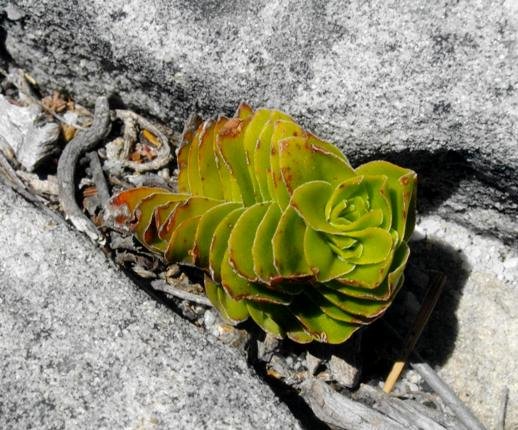Crassula dejecta, a Table Mountain ascetic

This brave Crassula dejecta plant was seen on Table Mountain, making the most of minimal resources available in its rocky abode. Judging by size alone one might be tempted to call it young, but such frugal partaking of nutrients as is happening here probably indicates slow progress. It might have taken this one years to become ready for a first stem tip branching as is occurring now... without a sign of dejection!
The leaf margins have the silvery sheen of this species that tells of tiny hairy fringe found there. Or is the whiteness here just a sign of the tough living conditions?
These overlapping broad-based leaves also resemble those of C. coccinea, although the leaves of that Crassula are normally a bit narrower, straighter and more sharply pointed. Resource and competence limits also impact on the observers of nature, bringing outcomes down from accuracy to fluctuating percentages.
When this plant comes to flower, red will confirm C. coccinea, white C. dejecta; both plants occur on Table Mountain. But then, a rare white flowering form of C. coccinea also grows on Table Mountain and further afield! And do these Crassula species hybridise? Uncertainty is a companion in nature and life. Always more to discover.
So, climb or take the cable car in summer and there may be answers and new questions on The Mountain. The majority of plants and people challenged by insufficient effort or resources remain anonymous. Thats why achievement is celebrated.

